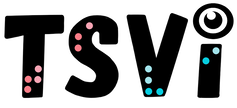- Home
-
Learn
- History of VI >
- Legislation & Laws >
- Vision Professionals >
-
VI Program Resources
>
- Program Printables
- Itinerant Teaching Tips
- Year at a Glance
- VI Program Handbook
- Caseload Analysis
- Organization & Time Management
- Professional Development
- Teacher Standards
- Professional Ethics
- Awards & Recognition
- APH Scholar Program
- Professional Organizations
- Certification Organizations
- Dealing with Challenges
- Professional Publications >
- Relatable Books for All Ages >
- Family Resources >
- Plan
- Basics
-
Teach
- Teaching Strategies >
-
Compensatory Skills Instruction
>
-
Social Skills
>
-
Self Determination
>
- Body Image & Acceptance
- Making Personal Goals
- My Vision Presentation
- My Self-Description
- Create a Personal Data Sheet
- Disclosure Decision
- Disability Statement
- Requesting Help
- Fighting Fears
- My Circle of Support
- Personal Responsibility
- Advocate for Safe Enviroments
- Having Picture Taken
- Coping with Change
- Aging Eyes
- Physical Characteristics
- Political Activism
- Laws Regarding Persons with Disabilities
-
Sensory Efficiency
>
-
Independent Living
>
- Orientation & Mobility Instruction >
- Recreation & Leisure >
-
Career & Vocation
>
-
Grow
- Complete Set Bonus >
-
Recorded Presentations
>
- Webinar: Tips for Being a "Physically Fit" TVI
- Webinar: The Art of Teaching the ECC
- Webinar: Virtual & F2F Strategies
- Webinar: Foundations of Teaching the ECC in the Age of Virtual Instruction
- Webinar: Itinerant Teaching Strategies
- Webinar: Using Themes to Teach the ECC
- Webinar: Conducting a FVLMA
- Webinar: Selecting the Right AT
- Webinar: Developing SMARTER Goals
- Webinar: Determining Service Intensity Using the VISSIT
- Webinar: Activities to Teach the ECC
- Webinar: Accessible Content for BLVI
- Webinar: Accommodations for VI
- Webinar: MIMO Strategies & Activities
- Webinar: SIDPID Strategies & Activities
- Webinar: Standard Course of Study Strategies & Activities
- Webinar: Job Tasks for Job, Career & Life
- Shop
- Jobs
Early Intervention Resource BooksThe following are early intervention resource books and online resources specific to working with students who are blind or visually impaired. If there are additional resource books you feel should be listed here, please let me know!
Affiliate Link DisclaimerTeaching Students with Visual Impairments is a participant in the Amazon Services LLC Associates Program, an affiliate advertising program designed to provide a means for sites to earn advertising fees by advertising and linking to amazon. As an affiliate, I earn from qualifying purchases. While I appreciate your support, please compare prices from other retailers that sell these products. Thank you in advance for your support! 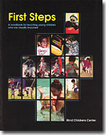
Anthony, Chen, Fazzi, et al. First Steps. The Blind Children's Center, 1993). This handbook for teaching young children who are visually impaired provides a foundation and an overview of issues and concerns to families. Topics include early childhood development, professionals, the eye, the family, behavior management, speech/language, sensorimotor development, O&M skills, self-help skills, IEPs and materials and devices for children with visual impairments.
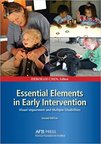
Chen, Deborah. Essential Elements in Early Intervention: Visual Impairment and Multiple Disabilities. American Foundation for the Blind (AFB), 1998. Contains explanations of both functional and clinical vision assessments, descriptions of evaluative and educational techniques, as well as suggestions on working with families and within professional teams.
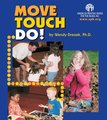
Derezek, Wendy. Move, Touch, Do. American Printing House for the Blind. From APH: This curriculum provides children opportunities to develop the awareness and skills to prepare them to enter formal education. Primarily for professionals. Materials provide an outline of daily activities, a structure of materials and skills for the school year, instructions for craft projects and sample communication boards.

Holbrook, M. Cay. Children with Visual Impairments: A Parents' Guide (Special Needs Collection). Woodbine House, 1995. Topics include: diagnosis and treatment; family life and adjustment; your child's development; Early Intervention and Special Education; literacy; Orientation & Mobility; multiple and visual disabilities; legal issues and planning for the future.

Pogrund, Rona L & Fazzi, Diane L. Early Focus: Working With Young Children Who Are Blind or Visually Impaired and Their Families. American Foundation for the Blind (AFB), 2002. Provides descriptions of early intervention techniques with children that are blind and visually impaired. Practical applications and strategies relating to cognitive and language development, orientation and mobility, social skills, early intervention, and program development.
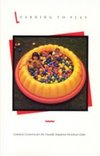
Recchia, Susan L. Learning to Play. Blind Children's Center, 1987. This booklet focuses on the importance and necessity of play in children's development. Students who are blind or visually impaired can have difficulty in exploring toys and materials, making transitions from one activity to another and playing with other children. This booklet provides suggestions for parents and professionals for helping students in these areas.

Schwarts and Miller. The New Language of Toys: Teaching Communication Skills to Children with special Needs: A Guide for Parents and Teachers. Woodbine House, 1996. A guide about using everyday toys to develop communication skills in children with disabilities and making playtime a fun, exciting and educational experience.
|
History of Visual Impairments
Professional Practice
Vision Professionals
Professionalism
Teacher Resources
Professional Publications
VI Book Resources
|
|
Teaching Students with Visual Impairments LLC
All Rights Reserved |
- Home
-
Learn
- History of VI >
- Legislation & Laws >
- Vision Professionals >
-
VI Program Resources
>
- Program Printables
- Itinerant Teaching Tips
- Year at a Glance
- VI Program Handbook
- Caseload Analysis
- Organization & Time Management
- Professional Development
- Teacher Standards
- Professional Ethics
- Awards & Recognition
- APH Scholar Program
- Professional Organizations
- Certification Organizations
- Dealing with Challenges
- Professional Publications >
- Relatable Books for All Ages >
- Family Resources >
- Plan
- Basics
-
Teach
- Teaching Strategies >
-
Compensatory Skills Instruction
>
-
Social Skills
>
-
Self Determination
>
- Body Image & Acceptance
- Making Personal Goals
- My Vision Presentation
- My Self-Description
- Create a Personal Data Sheet
- Disclosure Decision
- Disability Statement
- Requesting Help
- Fighting Fears
- My Circle of Support
- Personal Responsibility
- Advocate for Safe Enviroments
- Having Picture Taken
- Coping with Change
- Aging Eyes
- Physical Characteristics
- Political Activism
- Laws Regarding Persons with Disabilities
-
Sensory Efficiency
>
-
Independent Living
>
- Orientation & Mobility Instruction >
- Recreation & Leisure >
-
Career & Vocation
>
-
Grow
- Complete Set Bonus >
-
Recorded Presentations
>
- Webinar: Tips for Being a "Physically Fit" TVI
- Webinar: The Art of Teaching the ECC
- Webinar: Virtual & F2F Strategies
- Webinar: Foundations of Teaching the ECC in the Age of Virtual Instruction
- Webinar: Itinerant Teaching Strategies
- Webinar: Using Themes to Teach the ECC
- Webinar: Conducting a FVLMA
- Webinar: Selecting the Right AT
- Webinar: Developing SMARTER Goals
- Webinar: Determining Service Intensity Using the VISSIT
- Webinar: Activities to Teach the ECC
- Webinar: Accessible Content for BLVI
- Webinar: Accommodations for VI
- Webinar: MIMO Strategies & Activities
- Webinar: SIDPID Strategies & Activities
- Webinar: Standard Course of Study Strategies & Activities
- Webinar: Job Tasks for Job, Career & Life
- Shop
- Jobs
